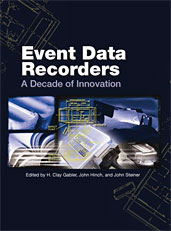Technical Paper
ATD Response in Oblique Crash Tests
2016-04-05
2016-01-1490
Oblique crashes to the vehicle front corner may not be characteristic of either frontal or side impacts. This research evaluated occupant response in oblique crashes for a driver, rear adult passenger, and a rear child passenger. Occupant responses and injury potential were evaluated for seating positions as either a far-or near-side occupant. Two crash tests were conducted with a subcompact car. The vehicle’s longitudinal axis was oriented 45 degrees to the direction of travel on a moving platform and pulled into a wall at 56 km/h. Dummies utilized for the seating positions were an adult dummy (50th-percentile-HIII and THOR-Alpha) for the front-left (driver) position, 5th-percentile-female-HIII for the right-rear position, and a 3-year-old HIII for the left-rear position.


